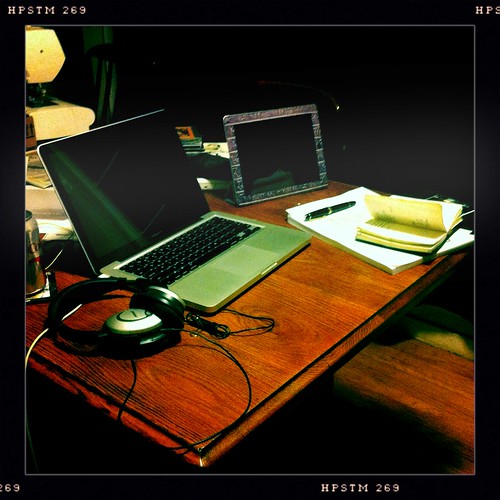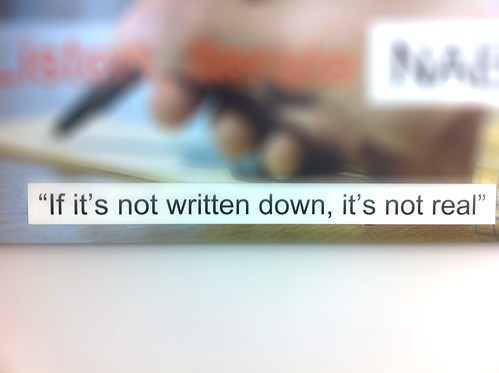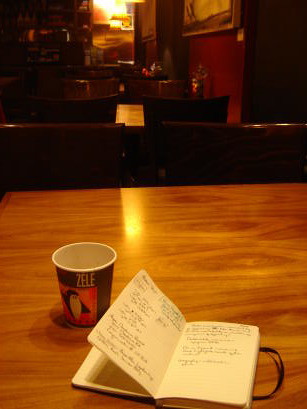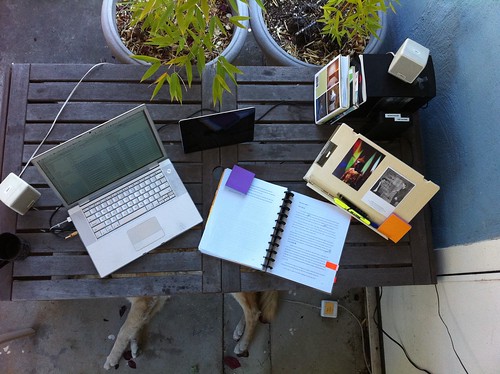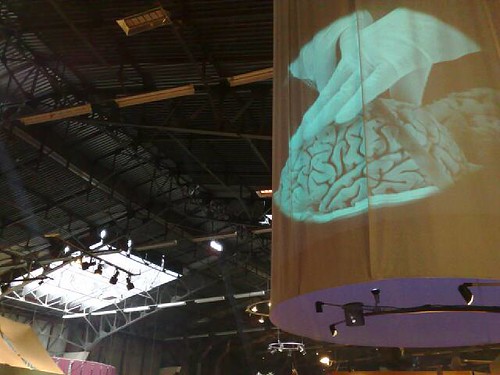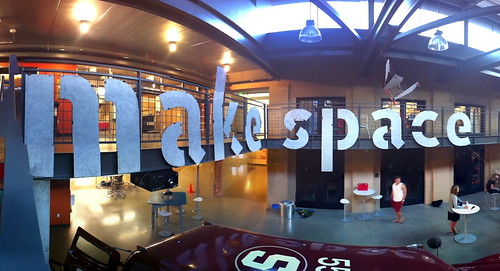When I was writing The Distraction Addiction, I got into the habit of getting up super-early to write. I’m not a morning person, and never have been, but I was willing to try anything to get words on the page, and lots of writers talk about getting up before dawn to write.
After a few painful days, I found it really worked for me. In the pre-dawn hours, I was just too damn bleary for Facebook to be appealing: it was the socio-cognitive equivalent of still being in your bathrobe and not wanting to interact with anyone until you’ve showered and dressed. I also felt like if I was going to get up this early, I wasn’t going to waste it, dammit.
I also discovered that if I stopped in mid-sentence the night before, I could sit down at the keyboard, finish that thought, and that would ease me into writing before the birds were up. Eventually, I’d get into a flow, start coming up with new things, and by the time it was time to get the kids to school, I had a few hundred words.
I also tried a mobile version of this as well. After dropping the kids off at school, I would take my old dog Christopher for a walk around the school (he had lived in that neighborhood so he knew it well), and carry my little Moleskine notebook and a pen in my hand. Christopher walked slowly, so it was pretty easy to jot down ideas in it as we walked.
They didn’t have to be brilliant turns of phrase, or blazing insights; my aim was just to keep thinking, and keep writing. Probably 95% of what I wrote down didn’t go anywhere, didn’t lead to another better thought, and never made it into the manuscript. But the other 5% did.
Writing a 90,000 word manuscript happens one word at a time, so having lots of good ideas matters.
That led me to a bigger realization: that while I’d spent most of my life thinking that the way you write is to wait for inspiration to hit and then start writing, a more reliable (and more professional) approach is to start writing, keep going, and trust that you’ll say something inspired. Writing is not an activity in which the creativity comes first; writing is the act through which creativity is sparked and expresses itself. You’re not a scribe to a Muse who throws lightning bolts (or whatever muses threw) at you; you’re an artisan whose inspiration is bound up in engagement with your instruments and materials and workspace.
Drake Baer has a piece in Fast Company that explains why this is so– why inspiration follows work, rather than the other way around. “[A]dvances in science have allowed us to get a better idea as to why better ideas come after jumping into our workflow,” he writes, “rather than waiting for sudden inspiration to strike.” The big idea is that regular, persistent practice puts you in a state in which big ideas– which actually are always shooting around in your mind, undetected and inaccessible– have a chance to get out.
You can go read the article for the details, but this strikes me as exactly right, and also not at all surprising– though our belief in native youthful genius, and our admiration for people who seem naturally gifted tends to obscure that fact. Baer’s account of the relationship between regular, persistent work and creativity is not at all unlike Christian contemplatives’ description of silence and meditation as essential for hearing the voice of God. As Thomas Merton would have put it, that voice is always present, but you have to still yourself enough to become aware of it, and to hear what it says.
There’s another takeaway from the piece. We tend to think of creativity as a kind of Browninan collision of different ideas; indeed, Fast Company’s definition is “finding the connections between seemingly unrelated things.” Like this restaurant in Finland:
This tends to encourage us to think of creativity as something happens during the give-and-take of brainstorming sessions, as arising from collaboration between interdisciplinary groups, through scintillating shop talk around the lab bench or water cooler, etc.
But the insight about persistence and focus reminds us that it’s critically important to have times where you can actually make and observe and reflect on those connections in your own mind. To have ideas worth sharing, you have to have a persistent practice that lets those connections become visible and tangible, expressed as words or code or pictures or plans.
